Check out our range of stock.
Didn't find what you like?
Send us a message
Found something out of stock?
Send us a message
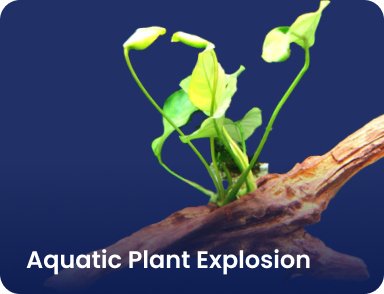

Aquatic Plant Explosion APE is a sustainability project created within the Nano Tanks Australia Brand. It is our hope that with APE we can provide a sustainable, quality products for our customers.
Nano Tanks Australia strives to be an empowering company and the APE Initiative is no different.
In future APE will have it's own YouTube channel and it will be a seperate entity from Nano Tanks Australia. It is the hope that APE will provide essential bunch plants to NTA customers.
Thank you for looking. If there is something you are looking for and it is not present here please let me know and we will try to get it in.

Rotala-Japan-Medium is an aquatic plant with a unique leaf pattern and coloration. The plant features soft, light green foliage with deep green veins running through it. The leaves are oval shaped and grow from a long, thin stem. The plant grows to a maximum height of around 12 inches and prefers moderate lighting and plenty of nutrients. It is a great choice for aquariums and can be used as a background or midground plant.
$10.00

The Variegated Japanese Dwarf Rush, also known as the Variegated Japanese Sweetflag, or Acorus Varigated Midground Plant has stiff, shiny, dark green leaves forming dense clumps. The arching foliage has cream to chartreuse stripes, making them a colorful addition to any aquarium. A grass-like plant that is native to Asia, the Variegated Japanese Dwarf Rush can be grown around ponds in a bog environment, and can be used in terrariums and aquariums as long as it is not fully submersed. The Variegated Japanese Dwarf Rush is a great plant for the first-time live aquatic plant keeper. It is a slow growing, hardy plant that may be kept in cold water aquariums as well as tropical aquariums. It will also tolerate light ranging from full light to partial shade. The best way to propagate the Variegated Japanese Dwarf Rush is by dividing the rhizomes. Let the new divisions get started in a pot for a few weeks before adding them back to the aquarium. Sometimes they will grow offshoots, which may also be used for propagation.
$10.00

Marsilea hirsuta is a carpet-plant from Australia. A fascinating plant, usually delivered with leaves like a four-leaf clover. After a transitional period it develops different types of leaves, possibly a low form with single leaves like a large Glossostigma, or alternatively develop two, three or four-lobed leaves varying in height (from 2-10 cm), depending on the growth conditions. Whichever form the plant adopts, it forms runners and spreads rapidly round the aquarium.
$10.00

Violet Lantern Sessilis is a deciduous shrub native to East Asia. It has a slow-growing, upright habit and reaches a height of up to 4 meters. Its large, glossy leaves are a deep purple-black hue that turn a brilliant yellow in autumn. The fragrant, bright yellow flowers emerge in mid-spring, followed by deep violet-black berries that ripen in summer. A perfect choice for a low-maintenance garden, Violet Lantern Sessilis can be used as a specimen or in groupings. It makes an excellent hedge or foundation planting and is deer and rabbit resistant.
$10.00

A Nice Aquarium Plant, Crepidomanes Auriculatum Overview Crepidomanes Auriculatum is a small flowerless (fern) plant that grows underwater. They are usually used to give a tank a nice forest look, and it grows up to 12 inches tall. Like other plants of their kind, it is ideal for keeping them with a stone or driftwood to keep it away from getting buried in the substrate. These live plants don't need plenty of light but highly need CO2. Therefore, good water flow with soft to medium hardness will be very beneficial. Due to their slow pace of growth, They must be protected against other plants that grow quicker because it is possible that they might obstruct the light. These plants are amphibious and can be found connected to trunks, rocks, and subtrate. Like other ferns, the ideal lighting is low to moderate. These plants are amphibious and can be seen attached between rocks, trunks, some areas of subtrate with a high hydrometric degree. Water Parameters Temperature: 50 - 86 °F PH level: 5.0 - 8.0 Lighting: Low Growth Speed: Medium Difficulty: Easy
$50.00

Buce on smooth lava rock is a type of aquarium plant that is characterized by its bright, vibrant colors and unique, smooth texture. It is native to some Southeast Asian countries and is often used in aquariums to create an interesting and eye-catching display. The buce has a unique form and shape, with long, thin leaves that are often frayed at the edges. It has a smooth and glossy surface, which gives it a unique look. The strong colors of this plant can range from bright oranges, yellows, and greens, to deep blues and purples. This plant is also easy to care for, and grows best in low light and warm water.
$39.95

Mini Pellia Riccardia Chamedryfolia is a beautiful moss that has grown in popularity of late. The popularity and demand of this moss is very high due to its easiness to keep. An alternative to Java moss that you may prefer the look. Extra care is required when using chemicals in the tank, this moss will suffer like most moss-like plants. It provides little shade and coverage to shrimp and small fish due to its low profile although it does provide an expansive lush mat. Attached to hardscape? Can attach to hardscape of left free-floating Typically attached to driftwood or rocks Recommend for stainless steel mesh Is Lighting required? Moderate light will be enough to see good moss growth. How to enjoy the look of this moss? Although moss is a great addition to a healthy tank, many aquarium plants in the freshwater planted tank will do a great filtration job as well and we recommend having both in the tank, as moss can take a long time to grow. At Nano Tanks Australia, we have a wide range of live plants. Image from https://www.aquariumgardens.co.uk/riccardia-chamedryfolia-pad-coral-moss-mini-pellia---tropica-1422-p.asp
$14.95
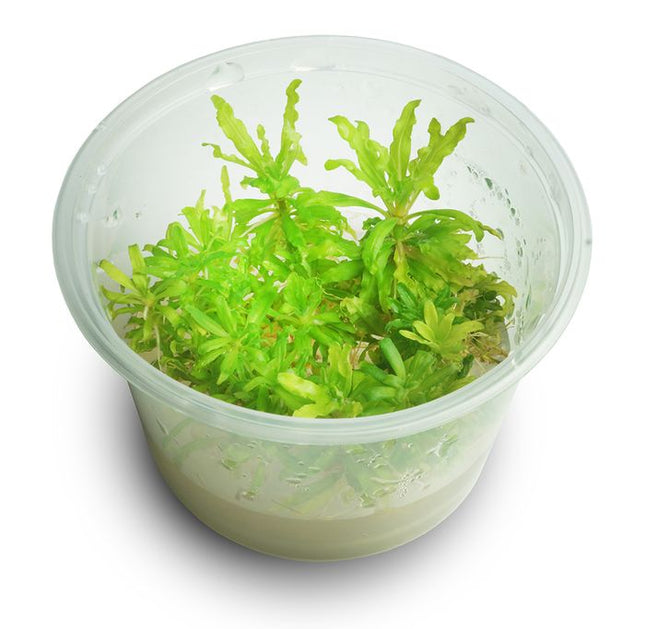
Aquarists in Thailand, close to the border with Burma, discovered this plant. It is called 'Downoi' (little star) in Thailand, and it is easy to see why (5-10 cm tall and wide). Pogostemon helferi is an unusual and distinctive aquatic plant with a compact habit, curly leaves and a strikingly beautiful green colour. With good light conditions and a nutrient-rich substrate, Pogostemon helferi forms many side shoots that develop small roots, and the plant rapidly forms an impressive carpet of foreground vegetation. Plant info Type: Stem Origin: Asia Growth rate: Medium Height: 3 - 10+ Light demand: Medium CO2 : Medium
$14.95

This delicate, very small-leaved stem plant is a selection of Rotala macrandra. It is also known as Rotala sp. 'Pearl'. It resembles Rotala macrandra 'Mini Type 2' but differs by shorter leaves curved downward. Strong lighting and good CO2 and nutrient supply are recommendable. It?s best placed as group in the foreground or mid ground, especially in nano tanks. Please note:As well as Rotala macrandra 'Mini Type 2', 'Pearl' is likely a mutant of Rotala macrandra 'Green'. It occasionally develops shoots that look like the wild type form of 'Green', with larger leaves and growing considerably faster. They should be cut off as soon as they emerge in order to preserve the typical 'Pearl' form. Also for propagation by cuttings, only shoots with the typical small leaves should be selected. This dwarfish Rotala macrandra selection looks best as a group in the foreground or mid ground, especially in nano aquariums. Synonyms Rotala sp. 'Pearl' Complete botanical name Rotála macrándra Koehne Family Lythraceae Genus Rotala Difficulty medium Usage Midground, Nano tanks pH value 4 - 7 Temperature tolerance 18 - 30°C Carbonate hardness 0 - 12°dKH General hardness 0 - 30°dGH Propagation Cuttings Can grow emersed? yes
$14.95
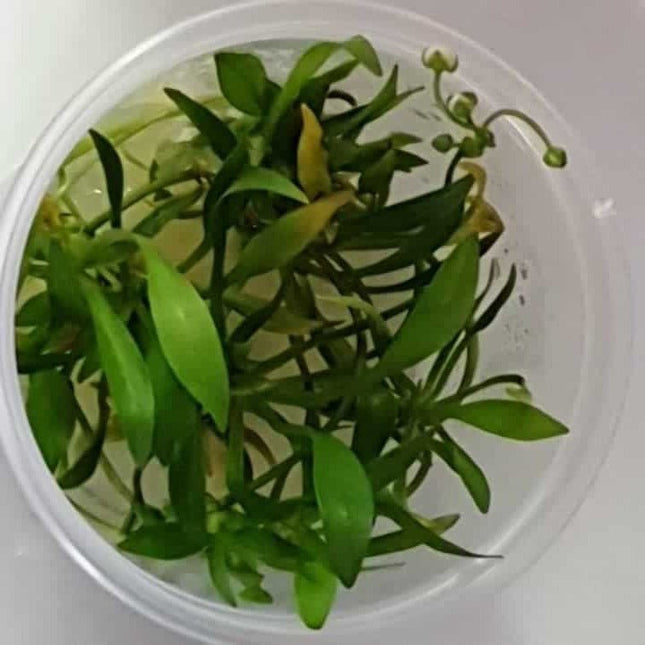
SMALL 1909 Common Names: Amazon swordDivision: MagnoliophytaClass: LiliopsidaOrder: AlismatalesFamily: AlismataceaeNative Distribution: Central and South AmericaAquarium Placement: BackgroundRequirements: Adaptable to a wide range of conditions Description:The Amazon sword has been widely used in the aquarium hobby for decades. Until recently, “Amazon sword” was the common name for a few larger Echinodorus species found in or near the Amazon River Basin, specifically E. amazonicus and E. bleherae. However, based on DNA testing done in 2008, those former species are now considered to be synonymous with E. grisebachii. For more data on that, refer to Kew Bulletin Vol. 63: 525–563 (2008). Amazon sword species can vary greatly in appearance and the conditions in which they grow. They can tolerate soft or hard water in a wide range of pH values, and temperature is not overly important, as long as it is kept in a reasonable tropical range. While the two most common Amazon swords have been grouped into a single species, there is still some difference in the conditions tolerated by them and their growth. The former E. amazonicus, for example, prefers softer water and reaches a shorter height of 16 to 20 inches. The variety formerly called E. bleherae, on the other hand, will tolerate hard water and can reach over 20 inches in height and girth. Amazon swords of all kinds prefer a deep substrate of at least 4 inches to accommodate a massive root system. However, this is only needed when the plants will be grown with moderate to high light and supplemented with nutrients. In a low-light tank, the plant will grow very slow and not fully develop such a large root system, although it will still benefit from a supplemental root fertiliser. Use in Aquascaping: Echinodorus grisebachii is best suited to the background of very large aquaria. However, many hobbyists use it as a focal point in the mid ground of the aquascapes. Its large leaves provide good contrast to smaller-leaved plants, which would include the majority of aquatic species. The leaves have a rich green colour and can often exhibit some red/bronze coloration in newly emerging leaves. In some fish-dominated aquaria, where a group of swords may be the only significant plants, Amazon swords have been known to be the preferred breeding spot for certain egg-laying cichlids such as angelfish. The large and wide leaves can provide shelter and even territory for many fish. Perhaps a less publicised use for this plant, yet just as important, is for hiding unsightly aquarium equipment in the aquascapes. Heaters, filter intakes, cords hanging over the edge of the tank, thermometers, etc., can all be effectively concealed by the large and densely leaved sword plant. Propagation: Amazon swords can be propagated by splitting a large plant into smaller plants by removing it from the substrate and carefully cutting the crown. They also send up submersed stalks, upon which several plantlets will form. These plantlets can be removed after they begin to form roots. If the stalk is left attached to the mother plant, it can produce many baby swords over a long period of time. With high lighting or very humid outdoor conditions, these swords can also be flowered and pollinated with a cotton swab or soft brush. Once the seed matures, it can be harvested and sown to produce new emergent plants Reference: http://www.tfhmagazine.com/details/plant-of-the-month/echinodorus-grisebachii.htm
$14.95
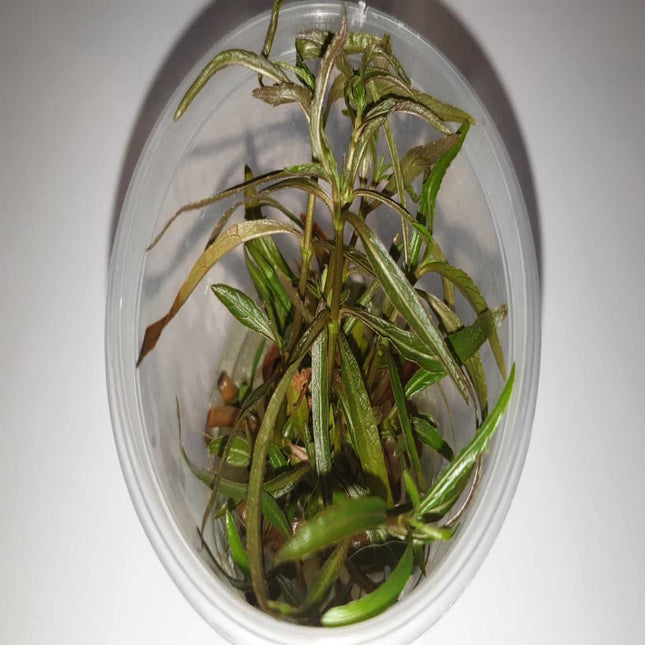
Hygrophila Angustifolia, also known as the Willow Hygro, is an undemanding, extremely attractive aquarium plant. It has large stems with narrow leaves that sway in the current like a weeping willow tree. Hygrophila angustifolia grows fast and helps keep aquarium water clean by removing nitrates, making it an ideal choice for the new aquarist. It requires a nutrient-rich substrate, with iron-rich fertiliser added regularly. Provide a moderate amount of lighting of at least 2 to 3 watts per gallon of full spectrum (5000-7000K) light. CO2 fertilisation is also recommended. For Hygrophila Angustifolia to thrive, the water should be kept between 74°-82°F, with an alkalinity of 3 to 8 dKH and a pH of 6.5-7.5. To propagate, plant cuttings that have been removed from the healthy mature plant. Simply remove any leaves from the bottom 1" to 2" of the stem, and new root growth will form from the last node on the stem. Care Level: Easy Colour Form: Green, Yellow Water Conditions: 74-82° F, KH 3-8, pH 6.5-7.5 Max. Size: 1' 8" Family: Acanthaceae Lighting: Moderate Supplements: Trace Elements, CO2 Fertilisation, Iron-Rich Fertiliser, Substrate Fertiliser Placement: Background Propagation: Cuttings
$14.95
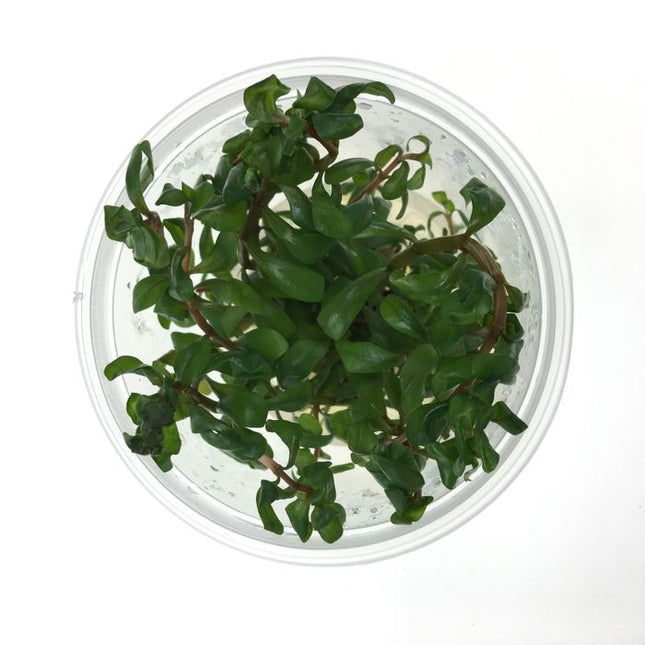
Grows to an average height of 16 - 20 inches (MID to BACKGROUND) The width of each stem is about 2 to 4 inches, based on leaf growth High lighting (3 - 4 watts/gal) Optimum growth temperature is 71.6 to 82.4 degrees Ammania Senegalensis needs nutrient rich water and substrate to do well in the aquarium. The color is almost an orange red, and propagation is by cuttings, which should be at least 10 inches long. Ammania Senegalensis needs a lot of light to do well. The width of each stem is about 2 to 4 inches, based on leaf growth. The leaf is curved in a downward fashion in an arch. In order to achieve strong shoots the substrate should be nutrient rich and light intensity high. Five to eight strong specimens can be used for the midground area to help accent the shades of green aquarium plants. Ammania Senegalensis does much better in soft water. Can withstand temps from 53.6 to 86 degrees. Optimum growth temperature is 71.6 to 82.4 degrees. Ammania Senegalensis requires high lighting (3 - 4 watts/gal) to do well. If kept in low-light tanks the leaves take on a dirty brown color. Separate each stem and plant individually. This will result in better growth and the lower leaves will still receive some light as the this aquarium plant grows taller.
$14.95

Hygrophila pinnatifida originates from India. It has brown, patched leaves on the surface with a distinctive burgundy color underneath. It grows horizontally if the top shoots are pinched off to maintain compact and attractive growth - horizontal side shoots attach easily to both wood and rocks. Growth is moderate, stems 15-40 cm tall and 10-20 cm wide in size with an attractive appearance when planted in small groups against a plain background under intense lighting conditions for slow or medium growing plants due their susceptibility to high light levels which always leads them towards denser growth because of their slower or intermediate populations rates overall as well as spreading out more quickly than taller plants do hence making it ideal for smaller spaces where height can be limited without sacrificing density. NOTE: 5 stems 10cm each on each one
$10.00

Green Syngonium, also known as Syngonium podophyllum or Arrowhead Vine, is a popular houseplant and aquatic plant in the family Araceae. It is native to tropical rainforests in Central and South America, but is widely cultivated as an indoor or outdoor plant in many parts of the world. In aquariums, Green Syngonium is often used as a low-maintenance foreground or midground plant. It can grow both submerged or emersed, and is usually planted in the substrate or attached to hardscape such as rocks or driftwood. The plant has arrowhead-shaped leaves that are typically green with white or silver veins. When grown emersed, the plant can produce small white flowers. Green Syngonium is an easy-to-care-for plant that tolerates a wide range of lighting and water conditions. It prefers bright, indirect light and water temperatures between 20-28°C. It can also be grown in a wide range of water hardness and pH, but does best in slightly acidic to neutral conditions. The plant does not require CO2 injection, but can benefit from regular fertilization to promote healthy growth.
$20.00
You have seen 122 out of 122 products